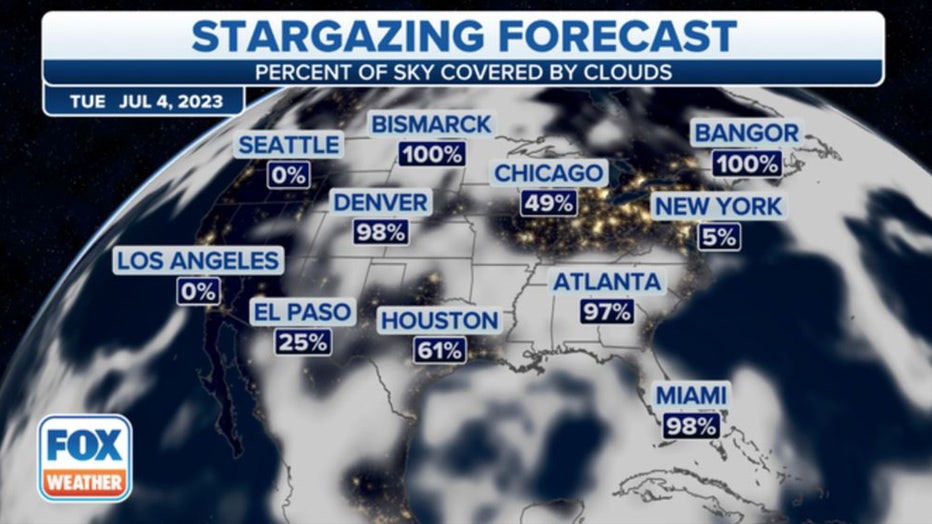Buck Moon: First Supermoon of 2023 puts on own celestial show for 4th of July

July's full Buck Moon as seen around the world
The full moon to kick off July wasn't just a full moon, but the year's first "Super" moon. It's also known as the Buck Moon. Here are a compilation of photos as the moon was seen around the world.
This year's four Supermoons happen during the next three months, with the first rising the night before America's birthday.
On July 4, the full moon will rise as evening twilight ends, according to NASA.
While the moon reached its full phase on Monday, the moon will still appear close to full through Tuesday evening.
Cloud cover may block some views of the moon July 3-4 from the Southeast to the Northeast, with rain in the forecast for the holiday weekend.

What is a supermoon?
A supermoon is when the moon is either full or new and is at its closest orbit with the Earth. They happen several times a year and can have different names depending on the month.
The July full moon is known by its Native American name – the Buck Moon – because deer antlers are in full growth during the summer.
Photographers around the world got creative with the Supermoon on Sunday night using architectural backgrounds to show off the glowing moon.
Depending on the Native American tribe, religion or place of origin, the July full moon has many other names. It is also known as the Thunder Moon, Rose Moon, Hay Moon or Mead Moon.
What is a Supermoon?

The cloud forecast for the U.S. on July 4 for the nearly full moon. (FOX Weather)
It's considered a Supermoon because the Moon will be closest to Earth during this part of its orbit. The effect of the full Moon and the close orbit will make it appear larger and brighter, but only by about 7%, according to the Farmers' Almanac.
With the Fourth of July the following day, the nearly full Moon will create a beautiful backdrop to fireworks and festivities if rain doesn't get in the way.
The next two Supermoons happen in August, and the year's final Supermoon happens in September.
July's sky-gazing forecast will also feature four planets visible in the sky and a chance to see the Milky Way's core by mid-month.

